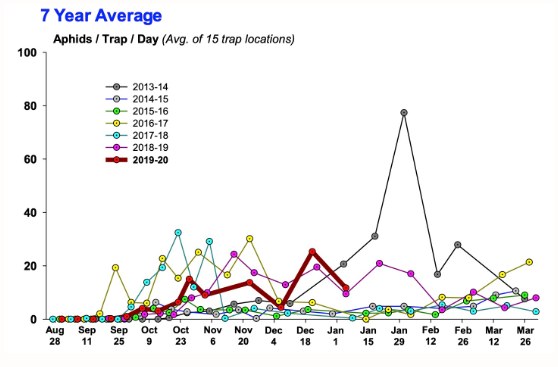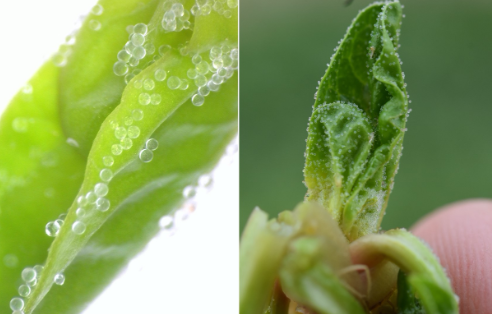
|
|
|
|

|
|||
|
|
|||
|
Be Extra Vigilant in Scouting for Aphids(January 22, 2020)
|
|||
Now that the days are getting longer and the temperatures a bit warmer, aphids are likely to be more common. Experience has also shown us that aphid population growth begins to increase significantly once the weather warms in January. Our local weather forecast suggests that temperatures will be in the upper 60’s with moderate nighttime lows in the mid-40’s for the next two weeks. Assuming the weather service is correct, these conditions may be ideal for aphid population growth. Similarly, with the rainfall we experienced in December, I would keep an eye for aphid pressure to start picking up on your lettuce, celery, spinach and cole crops. Previous research has shown us that aphids tend to be more abundant during mild, wet winters. | |||
| Back | |||
|
For questions or comments on any of the topics please contact Marco Pena at the Yuma Agricultural Center.
|
|||
|
Home |
Cotton | Veggies |
Forages | Grains
| Citrus |
Crop x Crop Insects | Diseases| Weeds | Pesticides | Economics | News | Weather | Research | Photos | Contacts | General Info. Copyright © 2001 University of Arizona, College of Agriculture and Life Sciences Webmaster: Al Fournier (acis@ag.arizona.edu) |
|||

